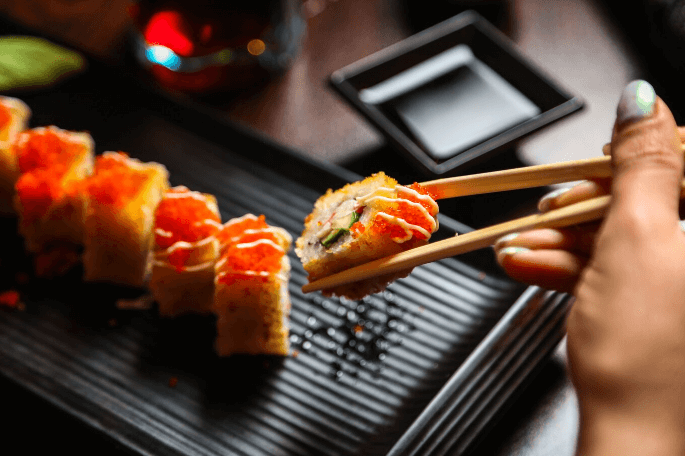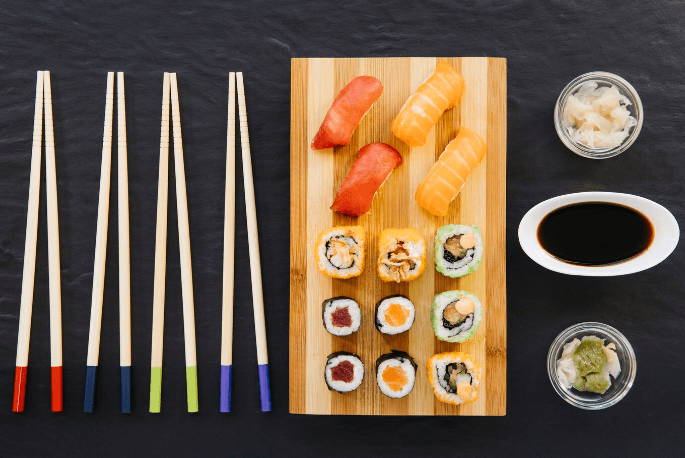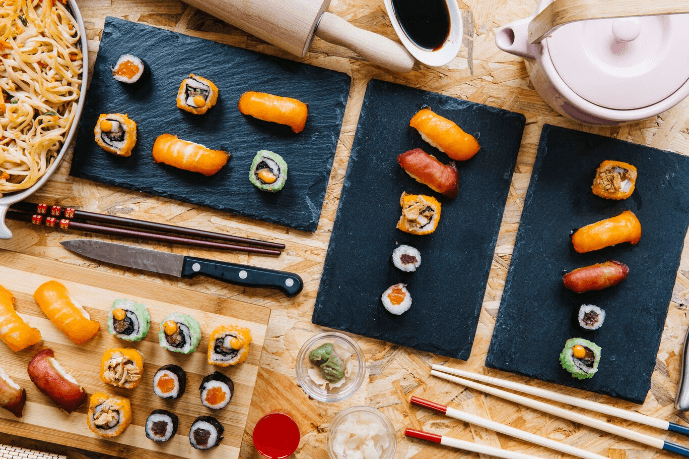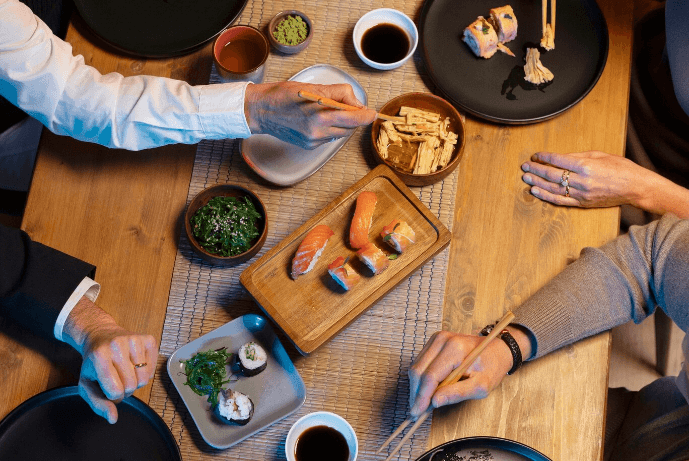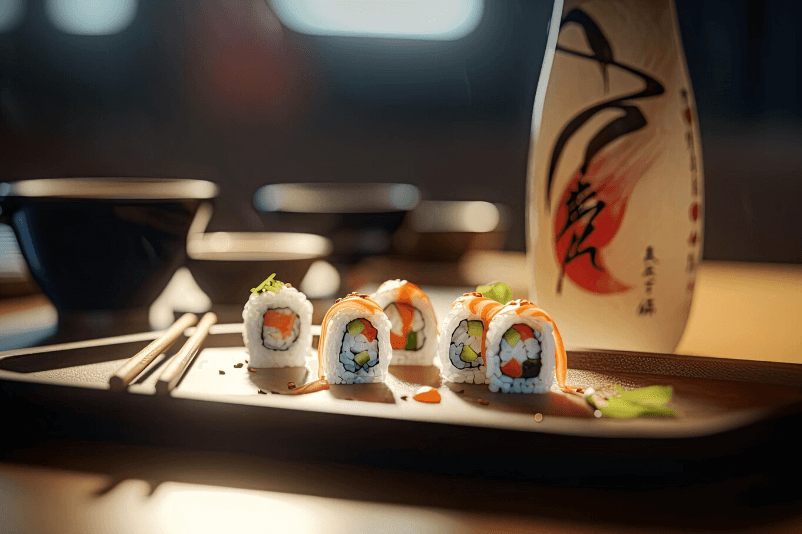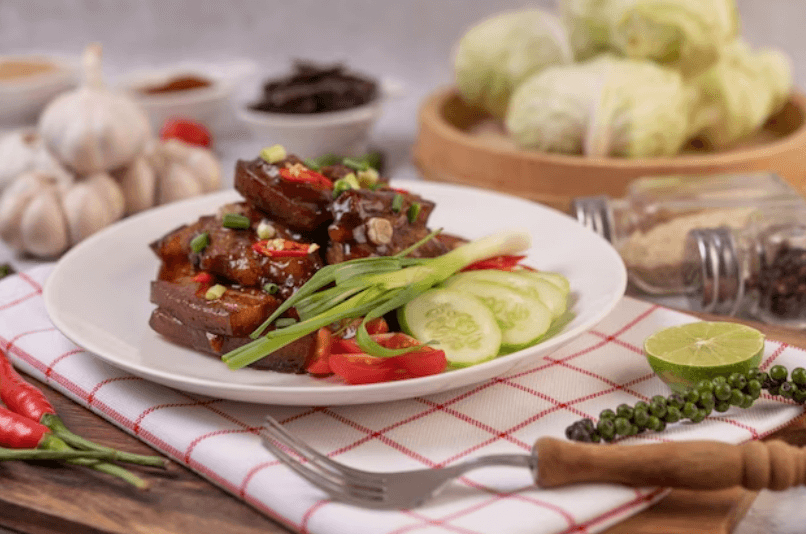International Sushi Day
Get your chopsticks ready and mark your calendars because June 18th is International Sushi Day! This culinary celebration recognizes the worldwide recognition of sushi – a traditional Japanese dish that has captured the hearts (and taste buds) of people all over the globe. From its humble origins to its evolution into fusion cuisine, sushi is a versatile delicacy enjoyed by millions. Join us as we explore the history, types, and cultural significance of this beloved dish and discover new ways to celebrate International Sushi Day.
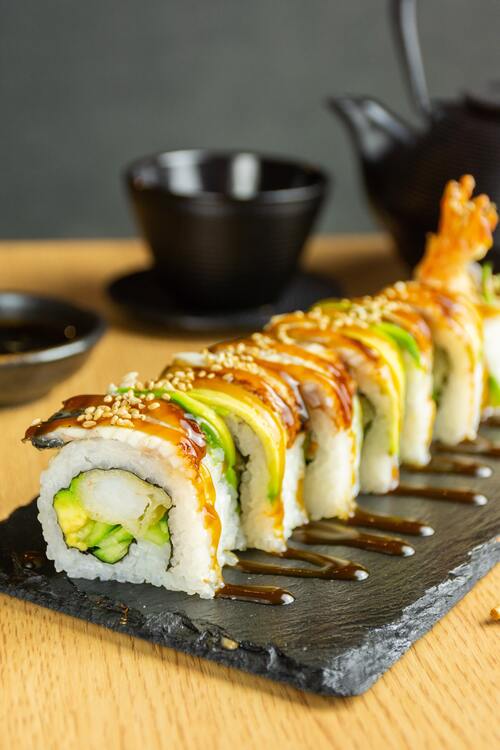
Introduction
Dive into the vibrant world of sushi as we celebrate International Sushi Day on June 18th! This special day is dedicated to honoring the rich history and diverse flavors of sushi, a culinary art form that has captured the hearts of food lovers across the globe. Join us as we explore the origins of sushi and discover how you can celebrate International Sushi Day in style.
Mention the date (June 18th) and the worldwide recognition of sushi.
June 18th marks International Sushi Day, a celebration of one of the most popular and beloved dishes in the world. This day recognizes not only sushi’s cultural significance but also its global appeal. From Tokyo to New York City, sushi restaurants can be found in nearly every corner of the planet.
But why has this traditional Japanese dish become so widespread? It’s because sushi is more than just food – it’s an art form that requires skill, precision, and attention to detail. Every ingredient must be fresh and carefully selected to create the perfect balance of flavors.
Sushi has evolved over time as different cultures have embraced it and put their own unique spin on it. While traditional sushi consists of raw fish served atop seasoned rice with a bit of wasabi, soy sauce, and pickled ginger on the side; fusion sushi combines these elements with other ingredients such as avocado or cream cheese.
So whether you’re a die-hard traditionalist or an adventurous fusion-lover, there’s something for everyone when it comes to celebrating International Sushi Day!
The Origins of Sushi
The origins of sushi can be traced back to Southeast Asia over 2,000 years ago. The earliest form of sushi consisted of salted fish that was fermented with rice and preserved for several months. This method allowed the fish to be stored without spoiling, making it an ideal food source for travelers.
Over time, the technique evolved into a way to preserve both fish and rice together. The Japanese adopted this method in the 8th century when they began cultivating their own rice crops. They would wrap fresh raw fish around small balls of seasoned rice before consuming it.
During the Edo Period (1603-1868), Tokyo became a center for sushi-making due to its access to high-quality seafood from nearby waters. Sushi chefs began experimenting with different types of seafood and ways of preparing it, leading to new variations such as nigiri-sushi (hand-formed sushi) and maki-sushi (rolled sushi).
Today, traditional preparation methods still exist alongside modern adaptations like California rolls or fusion-style made popular by Nobu Matsuhisa in Los Angeles during the late 1970s. Despite these changes, the underlying principles remain: using only fresh ingredients and allowing them to shine through minimal seasoning so that each bite is packed with flavor and texture.
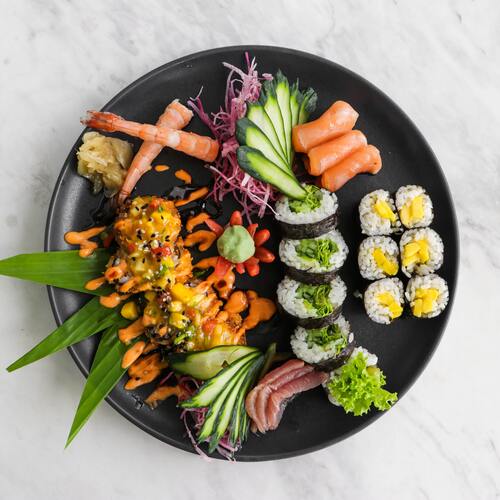
Explain the different types of sushi and their traditional preparation.
Sushi is a Japanese dish that has gained worldwide recognition for its delicious taste and unique preparation. There are various types of sushi, each with its own distinct flavor and style.
Nigiri sushi is the most popular type of sushi in Japan. It consists of a small ball of rice topped with fresh fish or seafood. The chef will often add wasabi between the rice and fish to enhance the flavor.
Maki sushi, also known as rolled sushi, is made by rolling together sheets of Nori seaweed filled with different ingredients such as tuna, cucumber, avocado, crab meat or salmon roe. The roll is then sliced into bite-sized pieces.
Temaki Sushi has become increasingly popular in recent years due to its convenience and customization options. Temaki translates to “hand-rolled,” meaning diners can create their own rolls by selecting fillings like spicy tuna or shrimp tempura wrapped in Nori seaweed.
Inari Sushi is another traditional Japanese type where sweetened tofu pockets are stuffed with vinegared rice filling alongside other ingredients like shiso leaves or pickled vegetables.
Preparing traditional sushi requires skillful techniques developed over centuries by expert chefs who train for many years before they can achieve mastery. Every element from choosing quality ingredients to cooking perfect rice demands attention from detail-oriented chefs who take great pride in their craft.
Sushi’s culinary celebration continues globally every year on June 18th – International Sushi Day!
Sushi Goes Global
Sushi has gone global, and it is now enjoyed all over the world. In different parts of the globe, sushi has taken on diverse forms, flavors, and textures. The traditional Japanese preparation of sushi involves a simple combination of rice seasoned with vinegar, raw fish or seafood toppings served alongside soy sauce and wasabi.
However, in other countries like America and Europe, fusion sushi has become popular. This type of sushi combines various cultural influences to create unique flavor profiles that cater to local tastes. Some examples include California rolls (avocado and crabmeat), spicy tuna rolls (raw tuna mixed with chili paste) or Philadelphia rolls (smoked salmon and cream cheese).
The popularity of this dish means that even fast-food chains have started offering their own versions of it. Sushi bowls are becoming more prevalent as well; these consist of diced vegetables topped off with sliced raw fish served over a bed of rice.
As people continue to travel the world for food experiences, they discover new ways to enjoy their favorite dishes while embracing new cultures’ culinary traditions along the way. Sushi will always be evolving as chefs experiment with different ingredients from around the world.
From street vendors selling fresh sashimi slices in Tokyo’s Tsukiji Market to award-winning restaurants serving up creative takes on Japanese cuisine in New York City- there is no doubt that international sushi culture continues growing into a deliciously exciting culinary celebration!
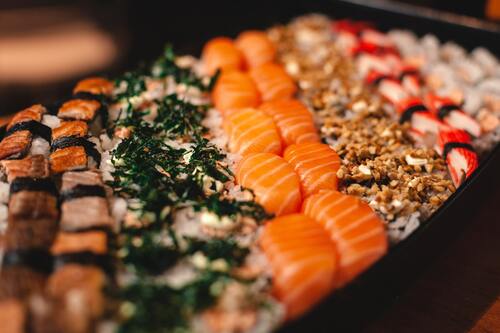
Share examples of fusion sushi and how different cultures have influenced sushi’s evolution.
Sushi is a dish that has evolved over centuries, and it’s no surprise that different cultures have left their mark on this popular Japanese delicacy. Sushi fusion dishes are a reflection of the global nature of culinary traditions, blending ingredients from various regions to create unique and flavorful combinations.
One example of fusion sushi is the California roll – one of the most popular types in North America. This sushi roll includes avocado, cucumber, crab meat (or imitation crab), and rice covered with sesame seeds or tobiko (flying fish roe). The California roll was first created by a Japanese chef living in Los Angeles during the 1970s as an attempt to cater to American tastes.
Another example is the spicy tuna roll – another favorite among American sushi lovers. This type of sushi originated in Los Angeles in the 1980s when chefs began adding chili sauce or mayonnaise to raw tuna rolls for extra flavor. Today, you can find variations such as spicy salmon rolls or even vegetarian options like sweet potato tempura rolls.
In South America, there’s “Sushi Latino,” which incorporates traditional Latin American flavors into sushi rolls. One popular variant is Ceviche Roll made with ceviche (a Peruvian citrus-marinated raw fish), mixed with avocado mashed potatoes and other vegetables rolled inside out using black quinoa instead of white rice.
We have Korean-Inspired Sushi! It features kimchi (traditional Korean fermented cabbage) rolled up with sticky rice along with other common ingredients like avocado or cucumbers for added freshness; this variation offers an explosion of flavors!
Fusion sushi serves as proof that food knows no boundaries – it showcases how different cultures can come together to create something beautiful and delicious. With so many creative possibilities available today due to globalization trends within culinary arts worldwide- International Sushi Day stands proudly tall among those days dedicated towards celebrating cultural diversity through cuisine appreciation globally!
Celebrating International Sushi Day
International Sushi Day is the perfect opportunity to indulge in this delicious and healthy cuisine. Whether you’re a seasoned sushi lover or someone who’s never tried it before, there are plenty of ways to celebrate this culinary celebration.
One way to mark the day is by trying new sushi restaurants in your area. There are always new places popping up that offer unique twists on traditional sushi rolls. You might just find a new favorite spot!
Another idea is to attend a sushi-making class where you can learn how to make your own rolls at home. This can be a fun activity with friends or family, and it’s also an opportunity to develop some new culinary skills.
For those who prefer hosting gatherings at home, why not throw a sushi party? Invite friends over for an evening of rolling and tasting different types of sushi. This is also an ideal time to experiment with fusion flavors by incorporating ingredients from other cultures into your rolls.
International Sushi Day offers the chance for us as consumers to consider sustainability when consuming seafood-based dishes. It’s important that we choose responsibly sourced fish so that future generations may continue enjoying these delectable bites guilt-free!
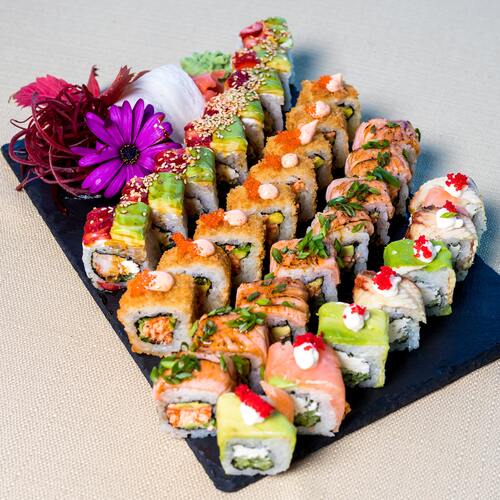
Suggest ways to celebrate International Sushi Day, such as trying new sushi restaurants, attending sushi-making classes, or hosting a sushi party.
International Sushi Day is a great opportunity to celebrate this delicious culinary creation. If you’re wondering how to celebrate this day, we’ve got some suggestions for you! Why not try out a new sushi restaurant in your area? There’s never been a better time to explore the diverse range of Japanese cuisine available around the world.
Another way to enjoy International Sushi Day is by attending sushi-making classes. Many restaurants and cooking schools offer workshops or courses where you can learn how to make your own sushi rolls at home. This is an excellent way to deepen your appreciation for this artful dish while exploring new techniques and flavor combinations.
If you prefer staying at home, why not host a sushi party with friends or family? It’s easy to set up a DIY sushi bar with ingredients such as rice, seaweed sheets, fish, vegetables, and sauces. You could even turn it into a competition by having everyone create their own unique roll!
Whatever method you choose, don’t forget that sustainability should be top of mind when consuming seafood-based dishes like sushi. Try purchasing sustainably sourced fish from reputable suppliers whenever possible or opt for vegetarian options instead.
Happy International Sushi Day – let’s eat!
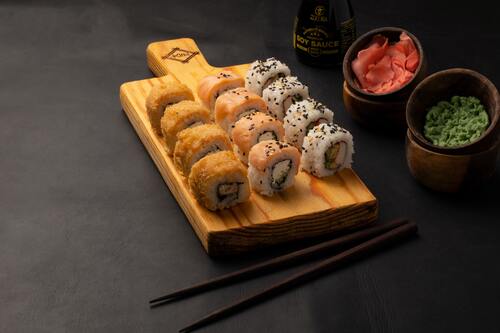
Sustainability and Sushi
Sustainability and Sushi:
Sushi is a popular culinary celebration that continues to thrive in today’s global food scene. However, with the growing demand for sushi comes significant environmental concerns such as overfishing and pollution.
To reduce our ecological footprint, it’s essential to choose sustainable seafood options when making sushi at home or dining out. The Monterey Bay Aquarium Seafood Watch program provides helpful guidelines on which fish species are sustainably sourced.
It’s also important to consider where your ingredients come from. Choose locally-sourced produce when possible, and avoid using single-use plastic packaging or utensils during preparation.
Another way to make sustainable sushi choices is by exploring plant-based alternatives like vegetable rolls or tofu sushi. These options not only offer a more eco-friendly option but also add variety to your meal.
By incorporating sustainability practices into our love of sushi, we can ensure that future generations will be able to enjoy this culinary delight without harming the planet.
Provide guidance for readers who want to make sushi at home to celebrate International Sushi Day.
Making sushi at home can be a fun and creative way to celebrate International Sushi Day. However, it’s important to keep sustainability in mind when selecting ingredients for your homemade sushi rolls.
When shopping for ingredients, look for sustainably sourced seafood such as wild-caught salmon or shrimp that has been certified by organizations like the Marine Stewardship Council. You can also opt for vegetarian or plant-based fillings such as avocado, cucumber, or tofu.
To make sushi at home, you will need a few key tools including a bamboo mat (also known as a makisu), nori sheets (dried seaweed), sushi rice vinegar seasoning, and of course your chosen fillings.
Start by cooking the sushi rice according to package instructions and mixing with seasonings before allowing it to cool slightly. Lay out a sheet of nori on top of the bamboo mat and spread a thin layer of rice over the surface leaving space at one end for rolling up the mat.
Add your filling ingredients in a line across the center of the rice before carefully rolling up using gentle pressure from the bamboo mat to create tight and compact rolls. Slice into bite-sized pieces using a sharp knife dipped in water between each cut.
Making sushi at home may take some practice but is sure to impress guests on International Sushi Day!
Conclusion
As International Sushi Day approaches, let’s come together to celebrate the history, art, and flavors of sushi. Whether you’re a sushi aficionado or a newcomer to the world of sushi, this special day provides the perfect opportunity to explore and indulge in the captivating world of sushi. Happy International Sushi Day!
FAQs
Is National Sushi Day a thing?
Yes, National Sushi Day is a thing. It is a day dedicated to celebrating sushi and its contribution to the culinary world. However, it is worth noting that International Sushi Day is more widely recognized and celebrated around the globe.
Is June 18th National Sushi Day?
June 18th is not National Sushi Day; rather, it is International Sushi Day. This day is celebrated worldwide to honor and appreciate sushi, its history, and the skilled sushi chefs who create this delicious culinary art.
Why do we celebrate International Sushi Day?
We celebrate International Sushi Day to recognize the historical and cultural significance of sushi, as well as its global popularity. The day aims to raise awareness of sushi’s rich history, diverse styles, and flavors, and to encourage people to enjoy and appreciate this unique culinary art form. It also serves as an opportunity to promote sustainable seafood practices in the sushi industry, ensuring a healthy future for marine life and our oceans.
Which country invented sushi?
Sushi was invented in Japan. Its origins can be traced back to the 8th century when fish was preserved by fermenting it with rice. The sushi we know today, featuring fresh fish and seasoned rice, started to take shape during the Edo period (1603-1868) in Japan. Since then, sushi has continued to evolve, and its popularity has spread across the globe, with many countries adapting sushi to their own tastes and preferences.
